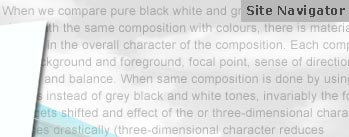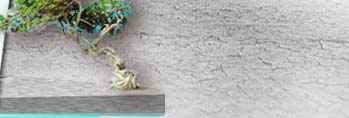|
Using
colour as an (additional) element of basic design
When we
compare pure black, white and grey compositions along with the
same composition done with colours, there is a significant change
in the overall character of the composition. Each composition
has a background and a foreground, focal point, sense of direction,
rhythm and balance. When the same composition is done by using
colours instead of grey, black and white tones, invariably the
focal point gets shifted and effect of the three-dimensional character
changes drastically (three-dimensional character reduces and it
makes the composition flat). It is interesting to learn and analyse
this visual shift of priorities by comparing the same composition
in black and white and using visual colours.
|



























